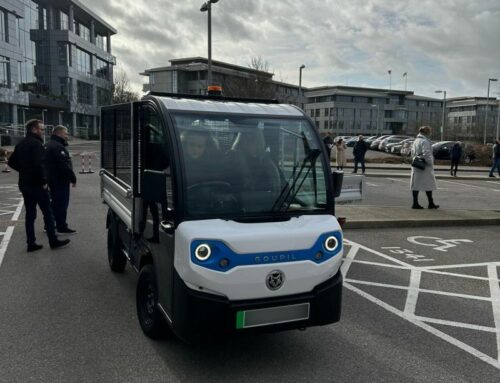FLEET operators who cannot see what is going on in vehicle cabs have a risk management blind spot, which can be solved by introducing in-cab cameras, says vehicle tracking provider Crystal Ball.
Employees exposed to risk in other areas of the workplace, such as warehouses, factory floors, workshops and yards are often monitored with CCTV now, and so the cab of vehicles should be too, dashcam provider Crystal Ball believes.
Raj Singh, managing director of Crystal Ball, said: “With a host of legal obligations relating to health and safety at work, many fleet operators are leaving themselves exposed because they have a blind spot: the vehicle cab. If a business has a duty of care policy but then avoids seeing what is going on in the vehicle, and what their employees are up to, they must ask themselves if they are avoiding an essential part of driver scrutiny.
“The majority of fleet operators have adopted telematics and continue to see the benefit of it every day when it comes to giving them real-time data on their fleet.
“In research we undertook of more than 200 fleets only 16% cited privacy concerns as a barrier to adoption of telematics. So adding on an in-cab camera to a telematics system is simple and cost-effective – businesses should go the extra mile to protect themselves, their employees and other road users.”
The devices, integrated into a 4G-enabled vehicle tracking system, can give companies an incredibly detailed picture of what happened when an incident occurs. Simply accessing video stored in the cloud could give a fleet manager evidence that their driver was not at fault, or it could provide the basis for offering further training to drivers who have not complied with company policy.
To help businesses implement an in-cab policy, Crystal Ball has complied a five-step plan (see below) to reassure employees that this is not an attempt to monitor every work journey and conversation.
Singh added: “The ‘big brother’ analogy is not only false, but unhelpful. In-cab cameras don’t record sound, so they won’t catch an employee making inappropriate comments about their boss, for example. And the footage from these cameras is wiped over within a short period of time if no incident occurs.
“What these cameras do is provide a fool-proof back-up to a driver’s version of events in the case of an incident. This could be the difference between an employee losing their job after being falsely accused of a motoring offence, or having their story verified at the touch of a button.”
Five steps for successful in-cab camera implementation
Crystal Ball believes that fleets installing in-cab cameras should adhere to the Government’s CCTV workplace advice on ‘Data protection and your Business’, to be found at https://www.gov.uk/data-protection-your-business/using-cctv
1 Explain why you want to install driver-facing cameras
It’s important to put foundations in place when you announce the implementation of a scheme. Present a case for doing this from a financial and safety perspective.
2 Make it clear they are being recorded, and why
When installing cameras, also put notifications in the vehicle stating that occupants are being recorded, so there are no grey areas. You don’t want to get into the situation where a driver or passenger can claim that they had not given consent to being recorded, or were unaware. Also, systems such as SmartCam don’t record sound, so it is important to make occupants aware of this.
List which vehicles have driver-facing cameras installed, and make it available to employees, but also make it clear why you are using them. As Government advice says, why cameras in the workplace (or cab in this case) are being used should be clearly explained, and it should be communicated that they can’t be used for other purposes.
3 Get consent and put it in employment contracts
Further to the above point, having the in-cab camera policy detailed in an employee’s contract of employment provides another level of protection for a company should issues with staff arise.
4 Data protection and privacy
Vehicle cameras fall under the remit of the General Data Protection Regulation (GDPR), which came into force in 2018, and so you must put in place certain process and follow rules about the storage and usage of what is recorded, in the same way as you would have to with CCTV at your business premises.
You must include information about the use of vehicle dashcams in your company policy on using, storing or processing personal data, including how long footage is stored for.
It must also be securely held, with access to data and footage restricted only to employees who have been through the relevant GDPR training and are authorised to access it. All SmartCam footage, for example, is held on portals managed by Crystal Ball with strict security protocols for access to it.
5 Promote the safety benefits
If your vehicles carry passengers, it will also provide a safety net for them too. After all, these vehicles are still a workplace: what goes on in them should adhere to the same standards you expect in the office, factory floor or warehouse. If the cries of ‘Big Brother’ are heard, it really shouldn’t be the case. In any work environment, employees are monitored closely and driving shouldn’t be treated any differently.
A solid driving policy, clear rules on what is allowed and what isn’t, backed up by the soft power of integrated vehicle tracking and dashcam system, and your employees will be safer than ever. And they will thank you for it in the end.







Leave A Comment